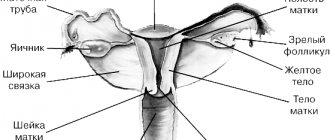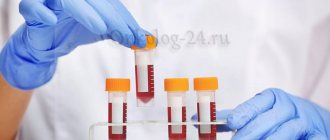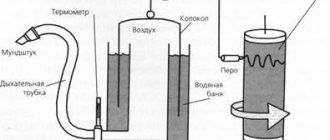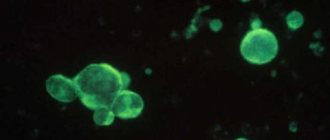Iron-deficiency anemia
According to ICD-10, the disease is coded D50. There are no characteristic symptoms observed. The most common clinical manifestations are weakness, dizziness, pallor of the dermis and mucous membranes. Before the first symptoms appear, anemia is hidden. In this case, the iron deficiency is replenished from reserves. It is detected by donating blood for ferritin. Anemia is caused by a large loss of blood or a lack of iron in the body, caused by:
- injuries;
- long and heavy menstruation;
- uterine bleeding caused by fibroids, endometriosis;
- vegetarianism;
- hidden bleeding from hemorrhoids or the digestive tract;
- problems with iron absorption due to illness or old age;
- taking medications that impair microelement absorption, for example, Ranitidine, Almagel, Omeprazole, etc.;
- pregnancy;
- hereditary pathologies.
A pronounced period of anemia occurs when reserves are completely used up, the number of red blood cells and hemoglobin decreases. A characteristic diagnostic sign of anemia is a decrease in the level of the latter. Successful treatment requires eliminating the cause of the disease and then replenishing iron deficiency.
How to increase the level of the substance through diet?
As mentioned above, it is necessary to find out the reason for the decrease in the concentration of this element in the blood. For example, if its absorption is impaired, then no matter how much the patient eats foods fortified with iron, his levels will be low. Thus, after taking an iron test, you should undergo an examination to find out the reasons for its decrease, and then begin to increase it, including the following foods in your diet:
- meat - lamb, rabbit, veal, goose, beef;
- liver of various animals;
- eggs;
- buckwheat;
- citrus;
- vegetables and fruits;
- sauerkraut.
It is important to remember that foods containing calcium (cottage cheese, white bread, milk, etc.) inhibit the absorption of iron. The process of iron entering the tissues, as well as into the reserve, is designed in such a way that its excess amount is not absorbed. Thus, the individual’s body takes this element from food in the quantity it needs.
general information
Iron is considered one of the important elements of blood; a large amount of it is found in red blood cells (erythrocytes). In the human body, iron takes part in the process of hematopoiesis. Maintaining this element at a certain level in the bloodstream is necessary for the binding, transport and transmission of oxygen. Iron is involved in oxidative reactions and the functioning of the immune system. The substance entering the body is absorbed in the intestines and then distributed through the blood vessels. Reserves are stored in the bone marrow, liver and spleen. Maintaining a certain level in the body is achieved by consuming foods containing sufficient amounts of this element:
- walnuts;
- legumes;
- soy;
- meat;
- fish;
- liver;
- porridges made from millet, oats or buckwheat and others.
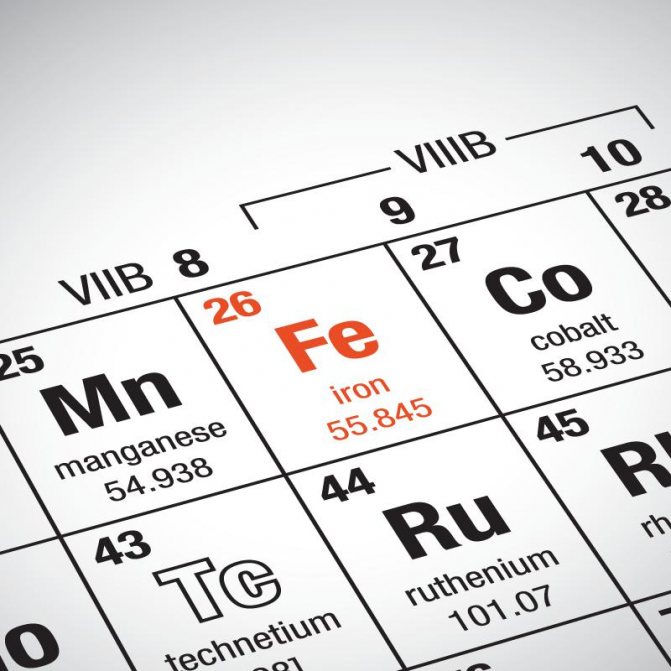
The absorption of the microelement is facilitated by vitamin C, contained in greens, vegetables and fruits. About 40 percent of protein foods are absorbed. Absorption occurs in the duodenum. In the female sex, the need for iron is significantly higher than in the opposite sex. This is due to the characteristics of the female body: menstruation, pregnancy, feeding the baby with breast milk. During menstruation, some of the iron is lost, and during the period of bearing a baby and feeding him, the need increases almost one and a half times. The child's body also needs an increased supply due to constant growth. Regardless of gender and age, both iron deficiency and deficiency are harmful to the body. This can be revealed using a regular study.
Preparatory activities for the delivery of biomaterial
To ensure the reliability of laboratory test results, preparation for iron analysis is necessary, which consists of the following:
- donate biomaterial in the morning, since at this time the iron content in the blood is highest;
- 8–12 hours before the test, do not eat;
- The intake of liquids should also be avoided;
- stop taking medications in consultation with your doctor;
- one day before the test, exclude alcohol-containing drinks, fried and fatty foods from the diet;
- on the eve of submitting the biomaterial, refrain from physical activity, including exercises;
- On the day of donating blood, do not brush your teeth, do not use chewing gum or breath fresheners, and do not smoke.
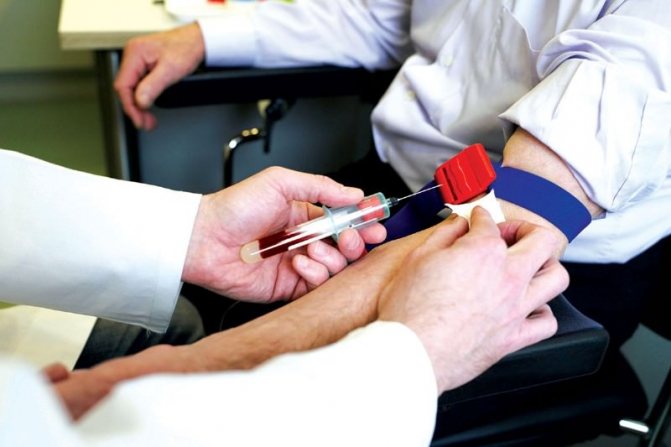
How to take an iron test correctly? First, follow the above rules. Next, before entering the laboratory office, sit for a few minutes, calm down and relax. It must be remembered that the results of the study are influenced by stress, menstruation, poor sleep, taking Metformin, Aspirin, Testosterone, i.e. these factors reduce the concentration of iron. Distortion of the result is possible when consuming Cyanocobalamin, alcohol-containing drinks, oral contraceptives, and even one tablet containing iron. In these cases, the concentration of the microelement will be reduced or increased. Thus, errors in preparation for submitting biomaterials negatively affect the results of the study and do not reflect the true picture.
What can be determined in a blood test?
An indirect factor in the disturbance of the content of this microelement is a change in hemoglobin concentration. It is by its value that the doctor decides which iron tests to take. The following types of studies are usually prescribed:
- Total iron binding capacity. This value is determined by its maximum amount, which is retained by blood proteins.
- The presence of ferritin in the blood serum. This indicator indicates the reserves of the microelement in the tissues.
- Serum iron level.
Low serum iron. Causes
For women this figure is slightly lower than for men. The maximum level is observed in the morning, and then its concentration drops. Serum iron analysis is important for monitoring the effectiveness of therapy for various diseases, including anemia, as well as for differential diagnosis. Anemia occurs almost unnoticed for some time, gradually causing serious disruptions in the functioning of the individual’s body. Among the external signs of the disease, the following should be noted:
- headache;
- drowsiness;
- general weakness;
- increased fatigue;
- dizziness;
- disturbances of smell and taste;
- pallor of the dermis;
- seizures in the corners of the mouth;
- fragility of hair and nail plates;
- an increase in temperature to low-grade for no particular reason.
There are several factors contributing to a decrease in serum iron. The most common are:
- resection of the stomach or intestines;
- iron deficiency anemia (according to ICD-10 - D50);
- tuberculosis;
- Crohn's disease;
- endocarditis;
- lupus erythematosus;
- rheumatoid arthritis;
- nutritional deficiency;
- childhood;
- pregnancy;
- chronic renal failure;
- malignant and benign neoplasms;
- lack of ascorbic acid in the diet.
During pregnancy
Due to the increased load on the female body during this period, the need for microelements, including iron, also increases. The latter is necessary for the development of the future baby. Symptoms of iron deficiency in a woman’s body include:
- pallor of the dermis;
- constant weakness;
- rapid fatigue;
- decrease in pressure;
- disturbance of taste sensations.

Iron deficiency can be corrected by changing your diet and taking medications prescribed by your doctor.
Reasons for low concentration
The microelement deficiency identified as a result of the analysis occurs for the following reasons:
- avitaminosis;
- disruption of intestinal functions, resulting in impaired absorption of iron;
- increased consumption;
- heavy bleeding, for example, gastrointestinal bleeding, provokes a decrease in red blood cells, and accordingly, iron;
- anemia;
- pancreatitis;
- gastritis;
- enterocolitis in the chronic stage.
During pregnancy, the fetus takes some of the iron from the mother, which is necessary for the formation of the baby’s internal organs. In addition, increased consumption is observed during breastfeeding. In the absence of compensation, a lack of iron occurs in a woman’s body, the symptoms of which manifest themselves as follows:
- pale skin;
- low pressure;
- weakness;
- dizziness;
- increased fatigue;
- changes in the taste of consumed foods.
Compliance with the diet chosen by the doctor will help the woman prevent such a condition.
Carrying out the procedure
How to get tested for iron? Doctors recommend donating biomaterial before nine o’clock in the morning, since it is during this period that the optimal iron content in the bloodstream is observed. This type of research is carried out in any health care institution, both private and public. The laboratory assistant takes the biomaterial from the vein into a dry test tube. The entire manipulation lasts about two minutes. Next, the individual is advised to drink sweet tea with chocolate in order to restore blood sugar levels and avoid dizziness. Decoding the results takes approximately three to four hours. Iron is sampled from blood serum. If deviations from the norm are detected, additional examinations are prescribed, as they signal health problems. After establishing the diagnosis and the reasons that provoked this condition, a course of treatment is prescribed. In laboratories, the concentration of iron in blood serum is determined.
In addition to blood biochemistry, iron levels can be determined using special test strips that are purchased at pharmacies. The microelement content is determined by changing the color of the indicator paper. This method is called express analysis for iron; using it, the level of this indicator is checked within 24 hours.
Iron analysis: normal (µmol/l)
The concentration of the microelement depends on the amount of deposited iron available in the bone marrow, spleen, intestines, as well as on the production and breakdown of hemoglobin. Natural loss of iron from the individual’s body occurs through sweat, urine, feces, hair and nails. Acceptable indicators depend on gender and age:
- Women - from 8.95 to 30.43. Iron levels peak during the luteal phase of the menstrual cycle, and decrease after menstruation. While waiting for the baby, when the organs of the fetus are formed, there is a slight decrease in iron, and then it increases again.
- Men - from 11.64 to 30.43.
- From one year to 14 years – from 8.95 to 21.48.
- From one month to a year – from 7.16 to 17.9.
- From birth to one month – from 17.9 to 44.8.
With age, the differences become barely noticeable; the amount of iron decreases in both sexes.
Reduced iron content indicates:
- acute or chronic illnesses of an infectious nature;
- anemia;
- bleeding;
- hepatitis;
- tumors;
- cirrhosis;
- hypothyroidism;
- problems with the digestive system.
In addition, in a blood test for iron, low iron content is detected with increased physical activity and taking medications such as glucocorticoids, androgens, and acetylsalicylic acid. Adherence to vegetarianism also helps to reduce the level of iron in an individual's body.
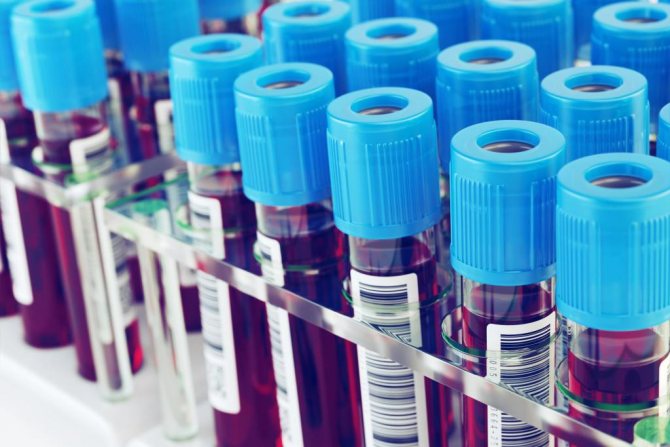
A high concentration of a microelement accompanies the following pathologies:
- poisoning with iron preparations, lead;
- hemolytic anemia;
- leukemia;
- thalassemia;
- lack of folic acid and B vitamins: B6 and B12;
- hemochromatosis;
- nephritis.
An increase in iron in the blood is provoked by the use of estrogens, oral contraceptives and some other medications.
